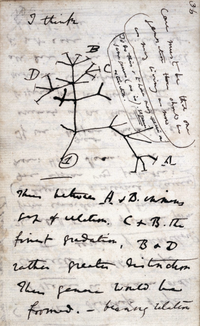
Photo from wikipedia
Abstract The rapidly increasing rate of antibiotic resistance is of great concern. Approximately two million deaths result annually from bacterial infections worldwide. Therefore, there is a paramount requirement to develop… Click to show full abstract
Abstract The rapidly increasing rate of antibiotic resistance is of great concern. Approximately two million deaths result annually from bacterial infections worldwide. Therefore, there is a paramount requirement to develop innovative and novel antibacterial agents with new mechanisms of action and activity against resistant bacterial strains. For this purpose, a set of benzothiazole and N-phenylpyrrolamides derivatives reported as DNA Gyrase B (GyrB) inhibitors were collected from the literature and docked inside the receptor cavity of DNA Gyrase B (PDB ID: 5L3J). The best 10 docked complexes were used to identify novel antibacterial chemical agents through a de novo design approach. Out of initial 300 chemical analogues, the best six analogues were identified using screening with a set of criteria followed by pharmacokinetic analysis. The binding interactions of the best six analogues revealed that all molecules formed a number of critical interactions with catalytic amino residues of DNA Gyrase B with high binding energy. The predicted inhibitory constant biological activity based on binding energy supported the potential of the molecules as DNA Gyrase B ligands. The RMSD, RMSF, and radius of gyration parameters obtained from the 100 ns molecular dynamics simulation study clearly demonstrated that all six analogues were efficient enough to form stable complexes with DNA Gyrase B. High negative binding energy of all ligands obtained from MM-GBSA approach undoubtedly explained the strong affinity toward the DNA Gyrase B. Therefore, the proposed de novo designed molecules can be considered as promising antibacterial chemical agents subject to experimental validation, in vitro. Communicated by Ramaswamy H. Sarma
Journal Title: Journal of Biomolecular Structure and Dynamics
Year Published: 2019
Link to full text (if available)
Share on Social Media: Sign Up to like & get
recommendations!